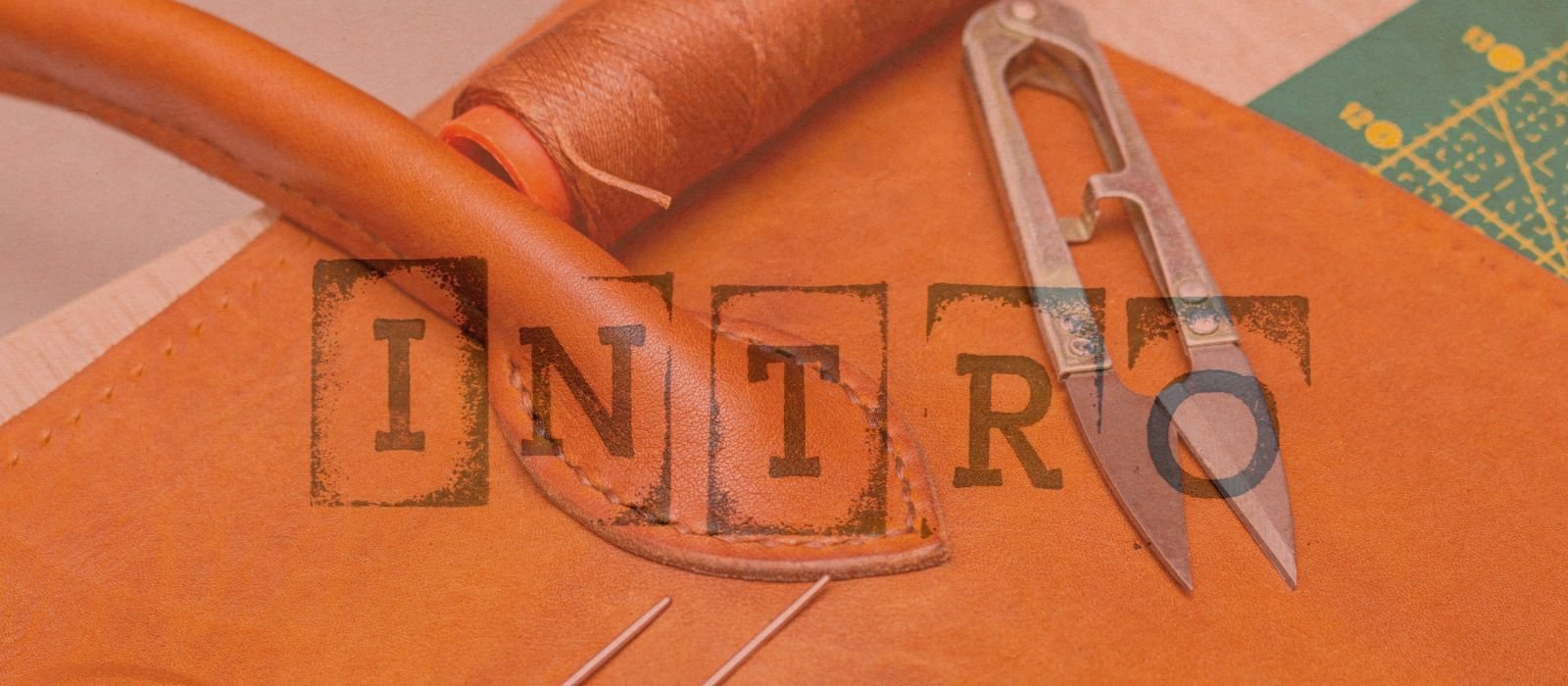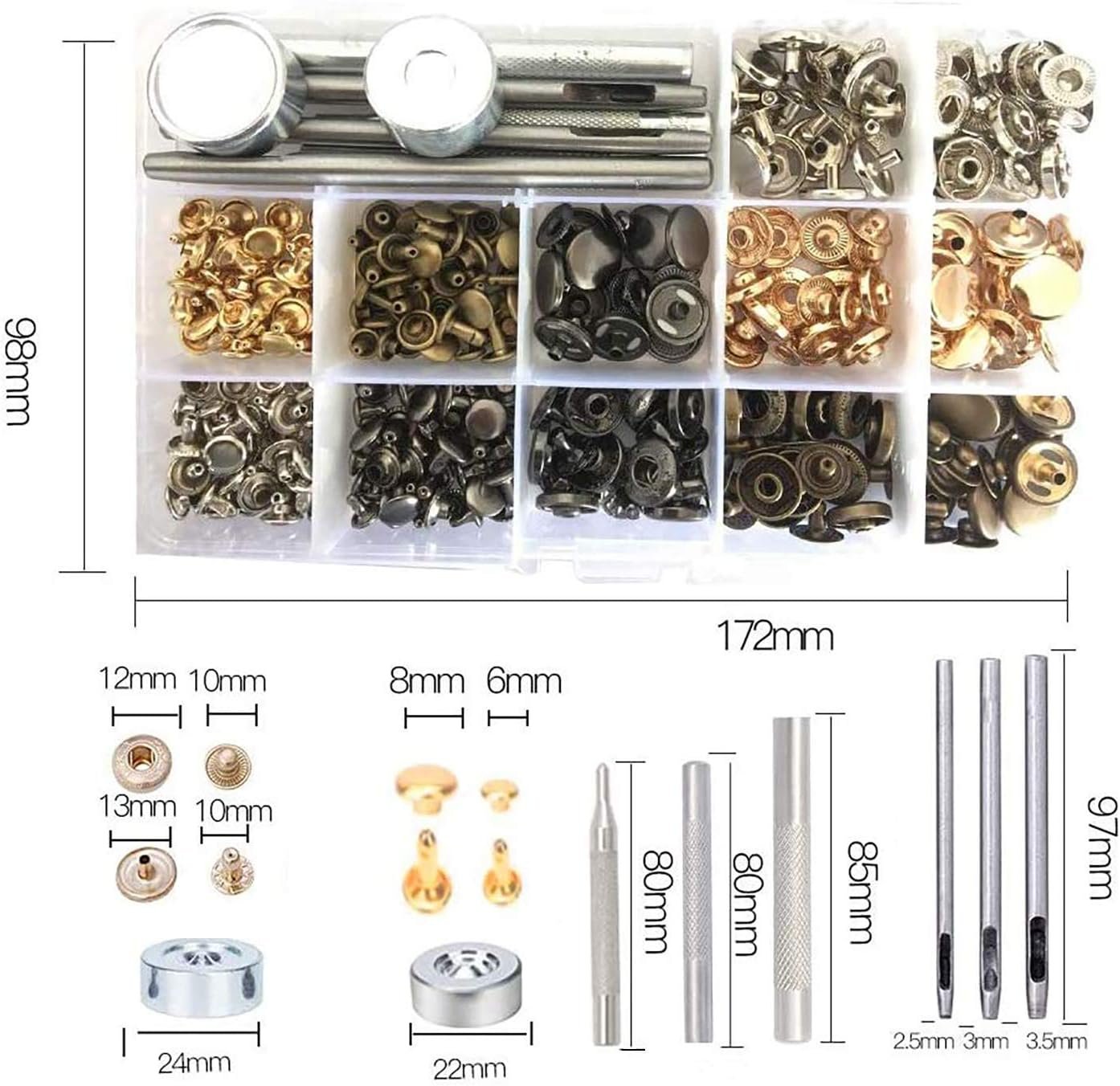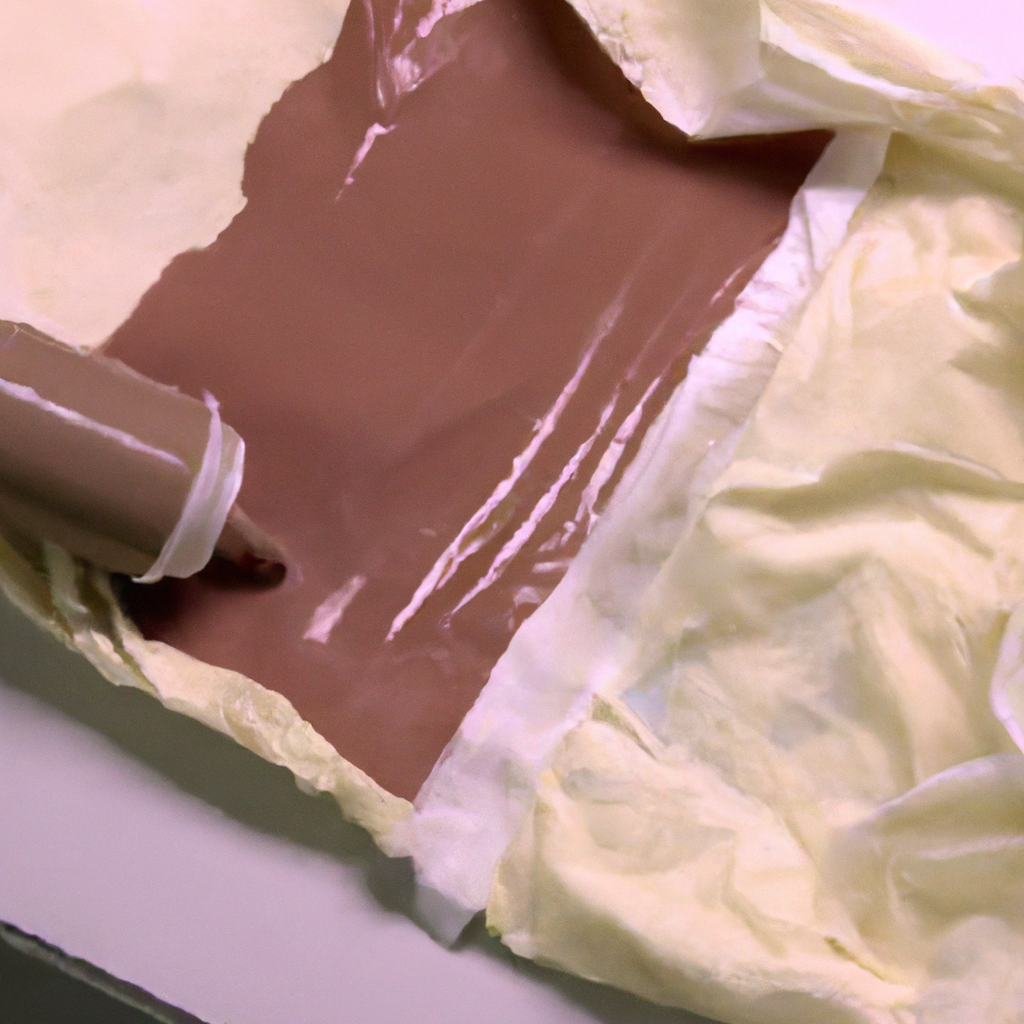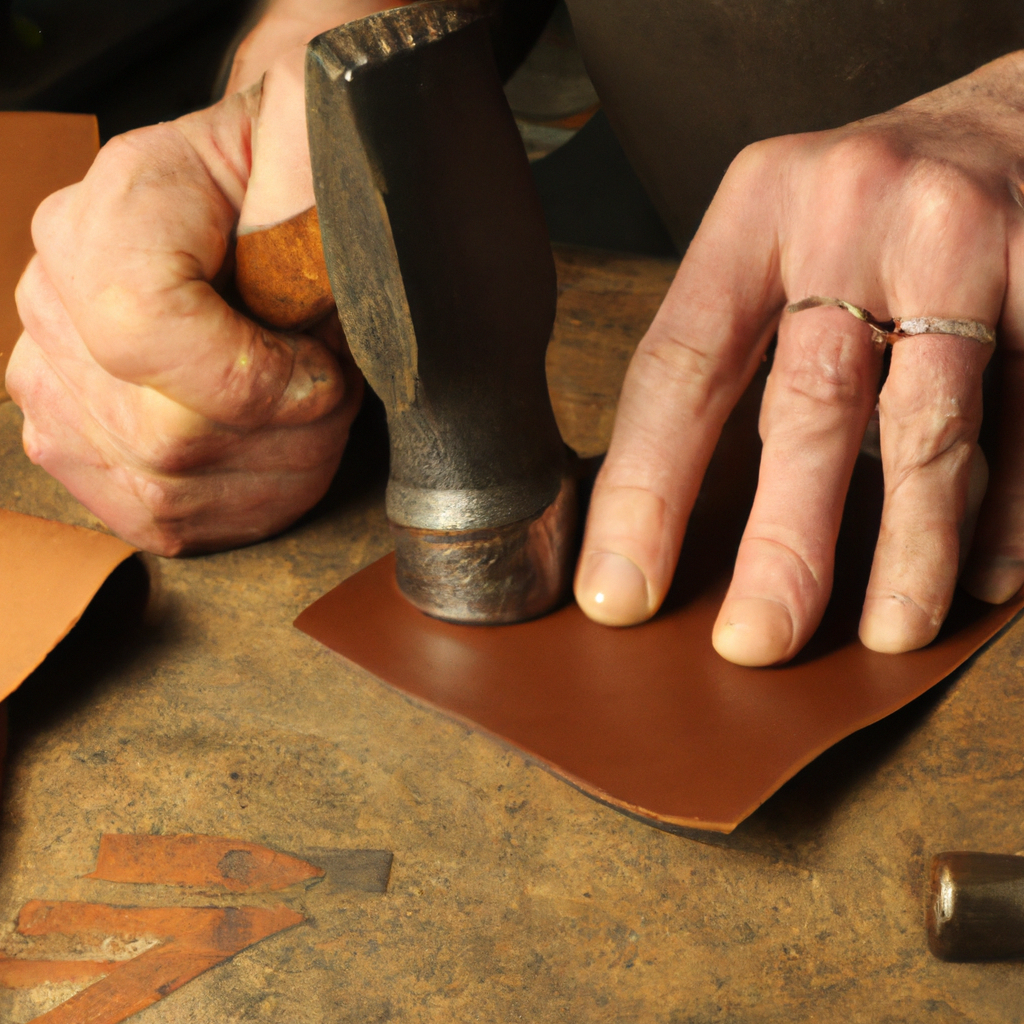A brief history of leather crafting
Welcome to the fascinating world of leather crafting! Leather crafting has a rich history that spans cultures and centuries, making it a testament to leather’s enduring appeal and versatility. You might want to learn more about this timeless art form if you’re reading this. Leather has been used for centuries, dating back to ancient civilizations. People have always been drawn to this material for its durability, strength, and natural beauty. From the ancient Egyptians to the skilled artisans of medieval Europe, leather has been transformed into a wide range of practical and decorative items, including clothing, footwear, bags, and even armor. Today, leather crafting continues to be a popular hobby and profession, with people worldwide creating functional and artistic pieces. Numerous techniques are used in leather crafting, each adding a unique touch to the finished product. These techniques include cutting, skiving, stitching, dyeing, and tooling. With practice, patience, and creativity, anyone can learn how to turn a piece of leather into a beautiful, one-of-a-kind creation. Leather is a highly sought-after material in various industries, from fashion and accessories to furniture and automotive interiors. Its versatility is one of the key reasons for its enduring popularity. Not only can leather withstand the test of time, but it also develops a unique patina as it ages, giving each piece its distinct character. Whether you’re a complete beginner or a seasoned leather crafter, there’s always something new to learn and create in this fascinating field. As you dive deeper into the world of leather crafting, you’ll discover a thriving community of artisans and enthusiasts eager to share their knowledge and passion for this timeless craft. So, grab your tools, let your imagination run wild, and embark on a rewarding journey into the art of leather crafting.Essential Tools and Materials for Leather Crafting
Embarking on your leather crafting journey is exciting, but having the right tools and materials is essential. Whether you’re a beginner just starting or an experienced leather crafter looking to expand your toolkit, this comprehensive list will help you find the must-have items for your projects. We’ll also provide links to our in-depth articles for further information and guidance.- Leather: The foundation of any leather crafting project is, of course, the leather itself. Various types of leather are available, including full-grain, top-grain, and genuine leather, each with unique characteristics. For more information on selecting the right leather, visit our guide on identifying and purchasing the best leather for your projects.
- Cutting tools: A sharp, reliable cutting tool is essential for precise and clean cuts. A utility knife or a rotary cutter will work well for most projects. Check out our article on eight tips for making better cuts in leather for helpful cutting techniques and best practices.
- Cutting mat: A self-healing cutting mat protects your work surface and extends the life of your cutting tools. Look for a rug with gridlines to help with accurate measurements.
- Ruler and measuring tape: Accurate measurements are crucial for creating professional-looking leather goods. A sturdy metal ruler and flexible measuring tape will help you accurately measure and mark your leather.
- Skiving knife: A skiving knife is used to thin the edges of leather, making it easier to fold and stitch. Our article on how to skive leather for your projects provides detailed information on this essential tool and its proper use.
- Stitching chisels and awls: To create neat and even stitches, use stitching chisels or pricking irons to mark and punch stitching holes. Awls can help to develop individual spots or widen existing ones. For more stitching techniques, read our tips for working with leather articles.
- Needles and thread: For hand-stitching leather, use blunt-tipped, sturdy arrows designed specifically for leatherwork. A waxed thread like Ritza Tiger Thread or Maine Thread Company will provide solid and durable stitches. Our beginner leather crafters guide offers more information on selecting suitable needles and yarn for your projects.
- Mallet or maul: A mallet or maul is used to strike tools like chisels, punches, and setters. It ensures even pressure distribution and reduces the risk of damaging your devices or leather. Visit our article on what every leather crafter needs to learn more about the importance of a suitable mallet or maul.
Choosing the Right Leather for Your Project
Selecting the right leather for your project is critical to achieving the desired outcome. With various leather types and applications available, it’s essential to understand the differences and choose the best option based on factors like thickness, finish, and quality. This section will discuss various leather types and offer guidance on selecting the perfect leather for your project. Explore our related articles on working with leather for more in-depth techniques and tips.- Types of leather: There are several types of leather, each with unique characteristics suited for different applications. Some common types include full-grain, top-grain, genuine, and bonded leather. Our article on calfskin vs. cowhide dives deeper into the differences between the two popular leather types. In contrast, our comprehensive guide on how leather is made provides a detailed overview of the leather-making process.
- Thickness and weight: Leather thickness, measured in ounces, is essential when choosing leather for your project. A thinner leather is more durable and suited for heavy-duty applications, while more delicate leather is more pliable and appropriate for flexible projects. To learn more about leather thickness and its implications for your projects, read our article on how to soften veg-tan leather.
- Finish and appearance: The finish of leather impacts its appearance, feel, and durability. Our article on tan kote vs. resolene compares two popular leather finishes and can help you determine the best choice for your project. Options include aniline, semi-aniline, and pigmented finishes, each with characteristics.
- Quality and sustainability: When choosing leather, it’s essential to consider the quality and sustainability of the material. Opt for leather from reputable suppliers prioritizing ethical sourcing and environmentally friendly production methods. Our guide on identifying and purchasing the best leather for your projects offers tips for finding high-quality, sustainable leather.
Techniques and Tips for Working with Leather
Working with leather requires practice, patience, and knowledge of various techniques and tips to achieve professional results. Our article on tips for working with leather offers a wealth of information on cutting, skiving, stitching, and finishing. In contrast, our 8 tips for making better cuts in the leather article provides specific advice on achieving clean, precise cuts. You’ll be well-equipped to create beautiful, functional leather goods by understanding the differences between leather types and essential mastering techniques. Continue exploring our linked articles for more in-depth information and guidance on leather crafting.Essential Leather Crafting Techniques
Mastering essential leather crafting techniques is crucial for both beginners and experienced leatherworkers. This section will discuss critical techniques like cutting, skiving, stitching, and finishing, and provide tips and tricks for achieving professional results. Explore our related articles for more inspiration and tutorials on creative leather projects.- Cutting: Precise cutting is the foundation of a successful leather project. It’s essential to use a sharp blade and maintain control while cutting. To improve your cutting skills, check out our article on 8 tips for making better cuts in leather. For more advanced techniques, please read our guide on skiving leather for your projects.
- Skiving: Skiving is the process of thinning leather, often to create smooth, even seams or reduce bulk. Using a skiving knife or a specialized tool like a leather strap cutter, which we cover in our article on the best leather strap cutter, can help you achieve the desired results. Practice and patience are vital to mastering this technique.
- Stitching: Proper stitching is essential for the durability and appearance of your leather goods. Several methods of stitching leather include hand-stitching and using a leather sewing machine. Our cowboy outlaw vs. tippmann boss leather sewing machines showdown article compares two popular sewing machines. Comparing cobra class 4 vs. cowboy 4500 and cobra class 26 vs. cowboy 3200 can help you decide which machine suits you.
- Finishing: A well-finished leather piece looks professional and lasts longer. Techniques like edge burnishing, dyeing, and sealing are essential to creating polished, durable leather goods. Our article on tan kote vs. resolene compares two popular leather finishes, and our guide on choosing and applying leather glue can help you achieve a strong bond between leather pieces.
Creative Leather Projects and Tutorials
Discover a world of creative possibilities with leather by exploring our wide range of projects and tutorials. From beginner-friendly projects like leather working projects for beginners to more advanced creations like how to make a leather dice cup, there’s something for everyone. For even more inspiration, check out our list of 10 unique and creative things you can do with leather.Step-by-Step Leather Project Tutorials for All Levels
Our website offers a selection of step-by-step tutorials for beginner, intermediate, and advanced leather projects, ensuring that you can find the perfect project to match your skill level. Each tutorial includes clear instructions, photos or videos, and required materials and tools to help you create stunning leather goods. Explore the links below to find the right project for you.- Leather Working Projects for Beginners: This article features beginner-friendly projects that will help you build your leather crafting skills and confidence. Start with simple tasks like making a keychain or a wallet and gradually progress to more complex creations.
- How to Make a Leather Dice Cup: A Simple Method: This intermediate-level tutorial guides you through creating a stylish and functional leather dice cup. With step-by-step instructions and helpful visuals, you’ll learn the techniques needed to complete this project.
- 10 Amazing and Creative Things You Can Do with Leather: This article showcases a variety of advanced leather projects, from intricate carving and tooling to creating complex bags and accessories. Challenge yourself and expand your leather crafting skills with these inspiring ideas.
- Chicago Screws vs. Rivets: Learn the differences between these two popular leather fasteners and determine which is best for your projects.
- 9 vs. 12 Copper Rivets: Compare the advantages and disadvantages of different rivet sizes and discover the ideal size for your leatherwork.
- Best Leather Strap Cutter: Find the perfect strap cutter for your needs with our comprehensive guide, which includes recommendations and reviews.
- Sailrite Fabricator vs. Juki 1541: Compare these two sewing machines and discover the one best suits your leather sewing needs.
How Can I Incorporate Sublimation into Leather Crafting?
Incorporating the sublimating leather process explained into leather crafting involves using heat and pressure to transfer dye onto the leather material. This technique allows for vibrant and durable designs to be applied to leather items, making it a popular choice for creating customized and unique leather goods.
How to Make and Sell Profitable Leather Goods
Leather goods have been a fashion staple for centuries, and the demand for high-quality and stylish leather items continues to grow. However, making and selling leather goods can be daunting, especially if you’re new to the industry. If you’re passionate about creating and selling leather products, there’s no better time to turn your hobby into a profitable business venture.
Before starting your leather goods business, several critical aspects must be considered, from sourcing materials to marketing your products. So, if you’re ready to grow your passion into a profitable enterprise, read on! This blog will provide practical tips and guidance on making and selling good leather goods – from choosing suitable materials and tools to pricing strategies that help maximize profits.
1. Introduction: Benefits of Selling Leather Goods
If you are passionate about craftsmanship and are looking for a profitable business opportunity, then selling leather goods may be your calling. As highlighted in the previous sections, making and selling leather products can provide numerous benefits, such as a bigger market, lower advertising costs, and a local following.
The vast leather industry offers endless opportunities to create diverse products. This blog will share tips and strategies for making and selling good leather goods, emphasizing how to stand out in a competitive market. Trust us, with the right mindset, skills, and strategies; you can be successful in your leather goods business.
2. Identifying Profitable Leather Products
When identifying profitable leather products, it’s essential to consider both the market demand and the cost of materials and production. For example, leather shoes and furniture tend to have higher profit margins because they solve problems and make people’s lives easier. On the other hand, leather garments may not be as profitable due to the high cost of materials and manufacturing.
Once you’ve identified your profitable leather products, you must price them accordingly and focus on effective marketing strategies to reach your target audience. It’s also essential to consider how much marketing and advertising you plan to do, as this can impact your overall profit. Considering these factors, you can maximize your profits and build a successful leather goods business.
3. Costing your Leather Products for Profit
Pricing your products correctly is crucial when running a profitable leather goods business. Section 2 discussed identifying profitable leather products that solve a problem or make someone’s life easier. Section 3 will delve into costing your leather products for profit. It’s important to consider all the costs associated with making your leather goods, including material costs, labor costs, overhead costs, shipping costs, and other expenses.
Proper costing is essential to building a profitable leather goods business, and it’s a critical factor in the overall success of your business. As a handmade leather goods business owner, I find it helpful to determine my hourly rate and factor that into the overall cost of my products. This ensures that I earn a fair wage for my time and effort. Once you understand your total costs, you can set prices to cover your expenses and provide a reasonable profit margin.
4. Effective Marketing Strategies for Leather Goods
Now that you’ve identified your profitable leather products and priced them for profit, it’s time to focus on effective marketing strategies for your leather goods. The key to success in this area is understanding your audience and giving them what they want.
For example, if your leather goods cater to a more upscale market, consider targeting your marketing efforts towards luxury publications and events. If you offer more functional leather products, you may find success in niche communities or through social media marketing.
In addition, it’s essential to utilize high-quality images and compelling product descriptions to showcase the value of your leather items. Another effective strategy is to offer limited edition or exclusive pieces to create a sense of urgency and demand. By implementing these tactics and experimenting with others, you can create a strong brand presence and increase your sales potential.
5. Selling on Your Own Website vs. Online Marketplaces
As mentioned in the previous sections, you can sell your leather goods in many online marketplaces. However, one crucial consideration is whether selling on your website or through online marketplaces makes sense. The answer to this question ultimately depends on your business goals and needs.
Selling on your website gives you more control over branding, customer experience, and profit margins. You can design your website to showcase your unique leather products and create a seamless customer buying experience. You won’t have to pay fees or commissions to third-party marketplaces.
Setting up and managing your store on a marketplace may be more accessible than building a website from scratch. On the other hand, online marketplaces like Amazon, Etsy, and Shopify may offer a wider audience of potential customers and simplify the selling process for you. They often have built-in traffic and established shipping, payments, and customer service systems.
Ultimately, deciding between selling on your website vs. online marketplaces will depend on your business needs and preferences. You may experiment with both options to see which works best for you. Before deciding, consider your business’s costs, benefits, and long-term goals.
6. Unique Ideas to Make Your Leather Goods Stand Out
One of the critical factors that can help you make good leather goods is to make them stand out in the market. Here are some unique ideas to achieve that goal. Firstly, you can add personal touches to your leather goods, such as monograms or custom designs, to attract customers’ attention. Secondly, you can experiment with different colors and textures of leather to create unique-looking products.
Thirdly, you can add some functional elements to your leather goods, like extra pockets or compartments, that can provide more utility and convenience for the customers. Lastly, you can showcase your leather goods on social media to gain visibility and connect with potential customers.
These ideas can make your leather goods stand out and enhance profitability when combined with effective marketing and branding strategies.
7. Tips to Expand Your Leather Products
So, you’re selling good leather goods and looking for ways to expand your range of products. Here are some tips that might help to grow your business:
1. Consider offering customization options for your leather items. People love personalized products that stand out from the crowd.
2. Look for new suppliers and materials to diversify your products. Experiment with different types of leather, colors, and textures.
3. Add miniature leather goods like keychains or luggage tags to your product line.
4. Expand into leather care and maintenance products like leather cleaners and conditioners. This can help you to market your products as long-lasting investments.
5. Create a seasonal line of products that can be used as gifts for specific holidays, like Valentine’s Day or Father’s Day.
6. Consider collaborating with other fashion or accessory brands to create unique, limited-edition products.
7. Continue to research your market and stay up-to-date with trends in the leather industry. This will help you to stay ahead of the curve and continue growing your business.
8. Enhance Profit Margins with Add-on Services
One of the best ways to increase profit margins in the leather goods business is to offer add-on services. For example, I provide personalization options such as initials embossed on wallets or custom designs on bags. These services not only increase the perceived value of my products, but they also allow me to charge a premium price. I’ve found that my customers appreciate the extra touch and are willing to pay more.
Another add-on service that works well is repair or restoration services. By offering to fix or restore a customer’s leather goods, I earn money and build trust and loyalty with my customers. Additionally, offering complementary products or accessories can also help to enhance profit margins.
For example, I offer leather care products such as conditioners and cleaners, which increase my profits and help my customers maintain the quality of their purchases. Overall, add-on services are a great way to increase profit margins and build a strong relationship with customers in the leather goods business.
9. Building Customer Trust in Leather Goods Business
Building trust with your customers is critical to establishing a loyal customer base as a leather goods seller. It starts with providing high-quality products that are worth the investment. But beyond that, you need to ensure that you are easily reachable and responsive to any customer inquiries or concerns.
This can include setting up an FAQ section on your website, offering multiple ways for customers to contact you, and responding promptly to any messages or emails. Following your promises, such as delivery dates or return policies, is also essential. By prioritizing customer satisfaction and showing that you value their trust in your brand, you’ll develop a strong reputation and increase your chances of repeat business and positive word-of-mouth referrals.
10. Conclusion: Key Factors to Keep in Mind for Profitable Leather Goods Business
In conclusion, there are several key factors to consider when aiming for a profitable leather goods business. This guide covers a lot, from identifying profitable products to costing your leather items for profit and effectively marketing your brand.
One way to stand out from competitors is by sourcing the highest quality products your business can afford. Additionally, creating pressures for innovation and seeking out unique ideas can help make your products more appealing to customers.
As you expand your leather business, remember to build customer trust and consider offering add-on services to enhance your profit margins. It takes time, effort, and capital to bring a leather business to life, but it can be a lucrative and rewarding venture with the right strategies in place.








